Your dog's wrist injury can turn their zoomies into slow-motion steps. One awkward landing or a slip on the kitchen floor, and suddenly, your buddy's walk looks a little wobbly.
With the right care, rest, and a bit of patience, your furry pal can bounce back stronger and happier. Let's talk about how to spot the signs and keep those paws moving with ease.
Understanding Dog Wrist Injuries
The wrist or carpal joint handles balance, shock absorption, and every step. When hurt, your dog's whole rhythm changes. Even small sprains can cause trouble, especially in large breeds or older dogs. But many pups bounce back once the injured joint gets rest and gentle care. Stay watchful, so those front legs stay strong and ready for fun.
What Is a Dog's "Wrist"?
A canine's "wrist," also known as the carpal joint, is a small but mighty part of their front leg. It connects the forearm to the paw and includes seven small bones that act like a shock absorber with every step. This joint helps your pooch walk, run, and land smoothly after every leap. When these bones or surrounding ligaments get stressed, it can lead to soreness or even carpal hyperextension.
How the Carpal Joint Supports Movement
The carpal joint bends, absorbs impact, and keeps every step balanced. Strong ligaments and tiny bones inside this joint allow smooth movement and mobility. They help protect the front legs from excessive force. When the wrist bends too far, the carpal ligaments stretch or tear, leading to instability. That's when a pup may limp, hesitate to jump, or show irritation after play.
Types of Dog Wrist Injuries

Canine carpal injuries come in many forms, and some pups handle them better than others. Here are the main types you'll often hear about:
- Sprains and Strains
- Ligament Tears
- Fractures or Bone Injuries
- Canine Carpal Hyperextension Injuries
- Chronic Joint Instability
Sprains and Strains
Sprains and strains are the most common carpal injuries you'll see after wild play or a hard landing. These happen when ligaments stretch or tear from excessive force, causing soreness and swelling in the joint.
Your dog might limp, avoid putting weight on the affected area, or lick the sore spot. With rest, gentle physical therapy, and maybe a wrist brace, most pups heal well.
Related Post: Dog Sprained Leg Recovery Time and Comforting Tips
Ligament Tears
Ligament tears sound dramatic, but they're fairly common in active pups. These injuries often happen when a dog twists the carpal joint during a run or jump. Torn ligaments cause swelling, soreness, and instability, making the affected area shaky or weak.
Mild cases may improve with non-surgical treatments like strict rest and wrist braces. Meanwhile, severe cases might call for surgical repair. A vet can check ligament damage through a physical exam and X-rays to find the best treatment option.
Fractures or Bone Injuries
Fractures or bone injuries in a dog's wrist often happen after a big fall or collision. These injuries affect the small bones inside the carpal joint, leading to swelling, redness, and obvious soreness. Dogs with this type of carpal injury might avoid using the aching leg or show stiffness when standing.
A vet specialist may recommend X-rays or a CT scan to check for breaks or cracks. Treatment can include plates and screws or strict rest to let the bones heal properly.
Canine Carpal Hyperextension Injuries
Canine carpal hyperextension happens when a dog's wrist bends too far, stretching or tearing the ligaments that keep it stable. This injury makes the carpal joint sag toward the ground, especially when your dog stands or walks. It's more common in large-breed dogs or older pups with weaker support structures.
Mild cases may improve with wrist braces and conservative management, while severe ones sometimes need surgical repair. A thorough physical examination helps decide the right treatment for each dog.
Chronic Joint Instability
Chronic joint instability develops when repeated carpal injuries weaken the ligaments and surrounding soft tissue over time. The wrist joint may wobble or collapse slightly when your dog walks, making every step uncomfortable. This condition can follow an untreated carpal hyperextension or ligament tear.
A veterinary specialist may suggest X-rays or advanced imaging to assess the affected limb. Supportive dog wrist braces or partial carpal arthrodesis surgery can restore stability and help your pooch move with normal function again.
Common Causes of Dog Wrist Injuries

The carpal joint endures a lot of pressure, and even healthy dogs can twist or sprain it without warning. Knowing these main causes helps prevent future mishaps:
- Jumping From Heights or Rough Play. Hard landings put too much force on the carpal joint.
- Slipping on Hard or Slick Surfaces. Sudden slides strain ligaments and tiny bones.
- Twisting or Overstretching the Paw. Quick turns can cause soreness or swelling.
- Overuse in Active or Sporting Dogs. Repetitive motion wears down joint stability.
- Age-Related Joint Weakness. Older dogs lose flexibility, making them more prone to injury.
Signs and Symptoms of a Dog Wrist Injury
A canine wrist trauma can sneak up quietly, but the signs are easy to spot once you know what to look for. Catching these symptoms early keeps the injury from getting worse:
- Limping or Lameness in One Leg. Common in dogs diagnosed with carpal issues.
- Swelling Around the Wrist or Paw. Puffy skin or redness in the affected leg.
- Stiffness or Difficulty Standing. Trouble moving after rest or sleep.
- Holding the Paw Up or Avoiding Weight Bearing. Clear sign of wrist discomfort.
- Sensitivity to Touch Around the Carpal Area. Tenderness when touched or groomed.
When To See a Veterinarian
If your dog's limp lasts more than a day or the wrist joint looks swollen, it's time for a checkup. A vet can identify whether your pup has a mild sprain or a more serious carpal injury. They may perform a thorough physical examination, X-rays, or advanced imaging like a CT scan. These tests reveal ligament damage, small bone fractures, or instability, guiding the best treatment plan for your pup's recovery.
Natural and At-Home Recovery Tips
Gentle support, rest, and close observation help most dogs return to normal movement. Always follow your vet's advice, and keep your pup comfortable through the healing process with:
- Rest and Restricted Activity. Limit playtime and give the injured joint time to recover.
- Creating a Comfortable Recovery Space. Use soft bedding and quiet surroundings.
- Using Cold Compresses to Reduce Swelling. Apply gently to soothe puffiness.
- Controlled Walks After Rest. Short, slow walks help rebuild stability.
- Monitoring Healing Progress at Home. Watch for changes in gait or swelling.
Natural Comfort and Support Options

Supportive tools and gentle care can keep your dog relaxed while easing soreness in the carpal joint. Simple changes, like cozy bedding and soft wraps, can go a long way in keeping recovery smooth. Some wrist braces provide steady support, reducing strain on the affected leg. Natural remedies, like CBD (cannabidiol) products, can also help dogs stay calm and comfortable through the healing process without harsh side effects.
How CBD Can Help Dogs Recover Comfortably
CBD can support dogs during recovery by promoting calm and helping ease irritation in the affected limb. It interacts with your dog's natural systems to encourage balance and comfort, helping reduce puffiness and stiffness in the carpal joint. Many dogs respond well to CBD, especially during rest or post-surgical care.
Unlike some medications, CBD is gentle and well-tolerated. Of course, always choose high-quality, vet-approved CBD made specifically for pets.
HolistaPet's CBD for Dogs
HolistaPet’s CBD products give dogs a natural way to feel better during recovery. Each wellness product is carefully made with broad-spectrum CBD, meaning no THC and no "high." Every item is vegan, non-GMO, and free from gluten or dairy, making it perfect for sensitive pups.
- Calming CBD Oil for Relaxation and Soreness Relief. Broad-spectrum CBD and hemp seed oil in a dropper bottle for easy use in food, water, or directly by mouth.
- Mobility Support Treats for Joint Recovery. Pumpkin spice and cinnamon treats with CBD and joint-aiding ingredients to promote stability.
- HolistaPet Muscle Support Soft Chews for Dogs. Peanut butter and banana chews with amino acids to support muscle strength and recovery.
Preventing Future Dog Wrist Injuries
Most carpal injuries come from too much strain or slippery surfaces, so small adjustments can help maintain joint stability. A little prevention now means fewer vet visits later.
- Maintaining a Healthy Weight. Reduces pressure on the carpal joint.
- Using Non-Slip Flooring or Mats. Helps prevent slips and twists.
- Avoiding High Jumps and Rough Terrain. Limits the risk of sudden impact.
- Strengthening Muscles Through Gentle Exercise. Builds support naturally.
- Gradually Returning to Normal Activity. Prevents re-injury during recovery.
Supporting Long-Term Joint and Muscle Health
Consistent care can protect your dog's carpal joint and other smaller joints from stress. Daily mobility treats or a balanced wellness product, for example, can help maintain joint function. In addition, good nutrition supports soft tissue strength, while physical activity keeps muscles firm. Lastly, regular vet visits make sure your healthy dog stays that way for years to come.
Final Thoughts on Helping Your Dog Heal Naturally
A carpal injury doesn't have to slow your best friend down for long. With rest, patience, and a few natural helpers, most dogs regain normal mobility and confidence in their step. Keep an eye on swelling, stick to gentle physical therapy, and follow your vet's plan for lasting recovery.
For extra comfort and calm, HolistaPet's CBD products offer trusted joint support with all-natural, pet-safe ingredients. Helping your pup heal naturally keeps them zooming in the best way.

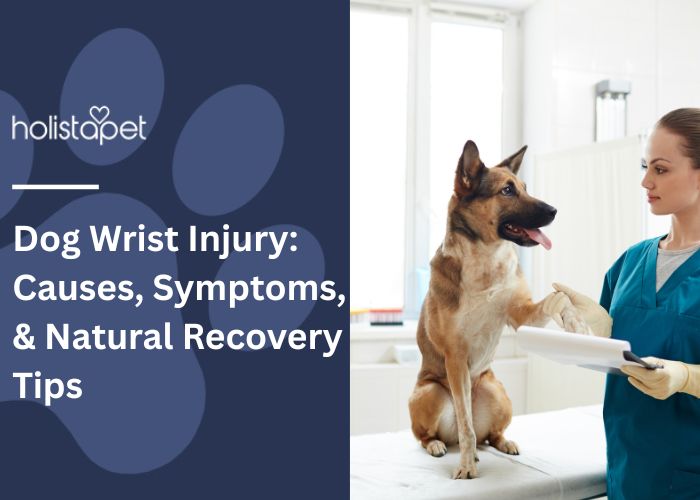
 CBD Oil for Dogs - Fast Acting
CBD Oil for Dogs - Fast Acting
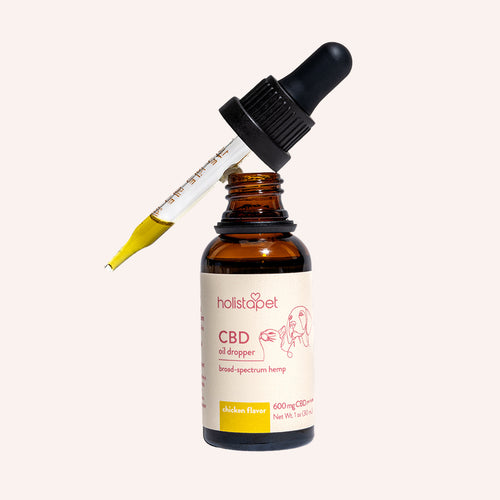 Chicken Flavored CBD Oil For Dogs - Easy Dose
Chicken Flavored CBD Oil For Dogs - Easy Dose
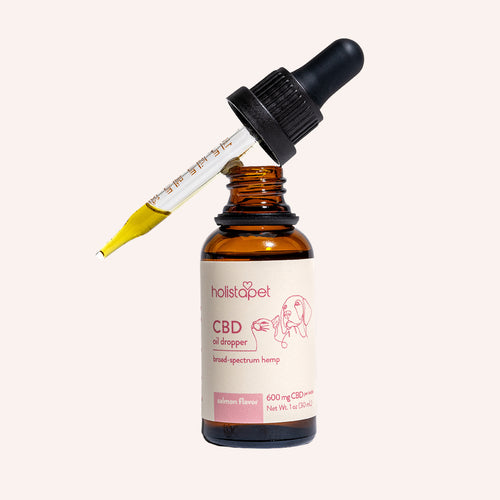 Salmon Flavored CBD Oil For Dogs - Highly Rated
Salmon Flavored CBD Oil For Dogs - Highly Rated
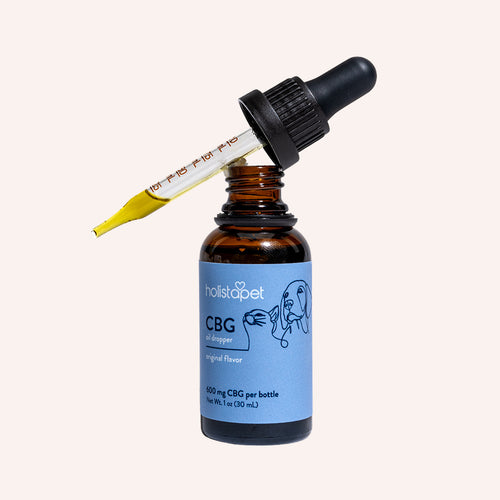 CBG Oil for Dogs and Cats - Loved by Thousands
CBG Oil for Dogs and Cats - Loved by Thousands


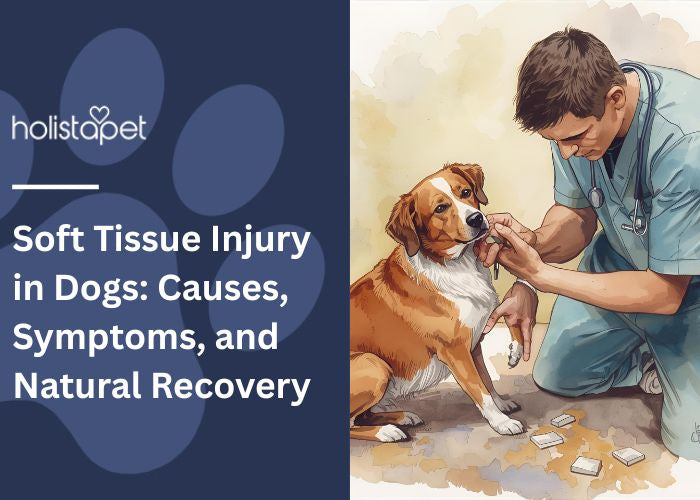

Leave a comment
All comments are moderated before being published.
This site is protected by hCaptcha and the hCaptcha Privacy Policy and Terms of Service apply.